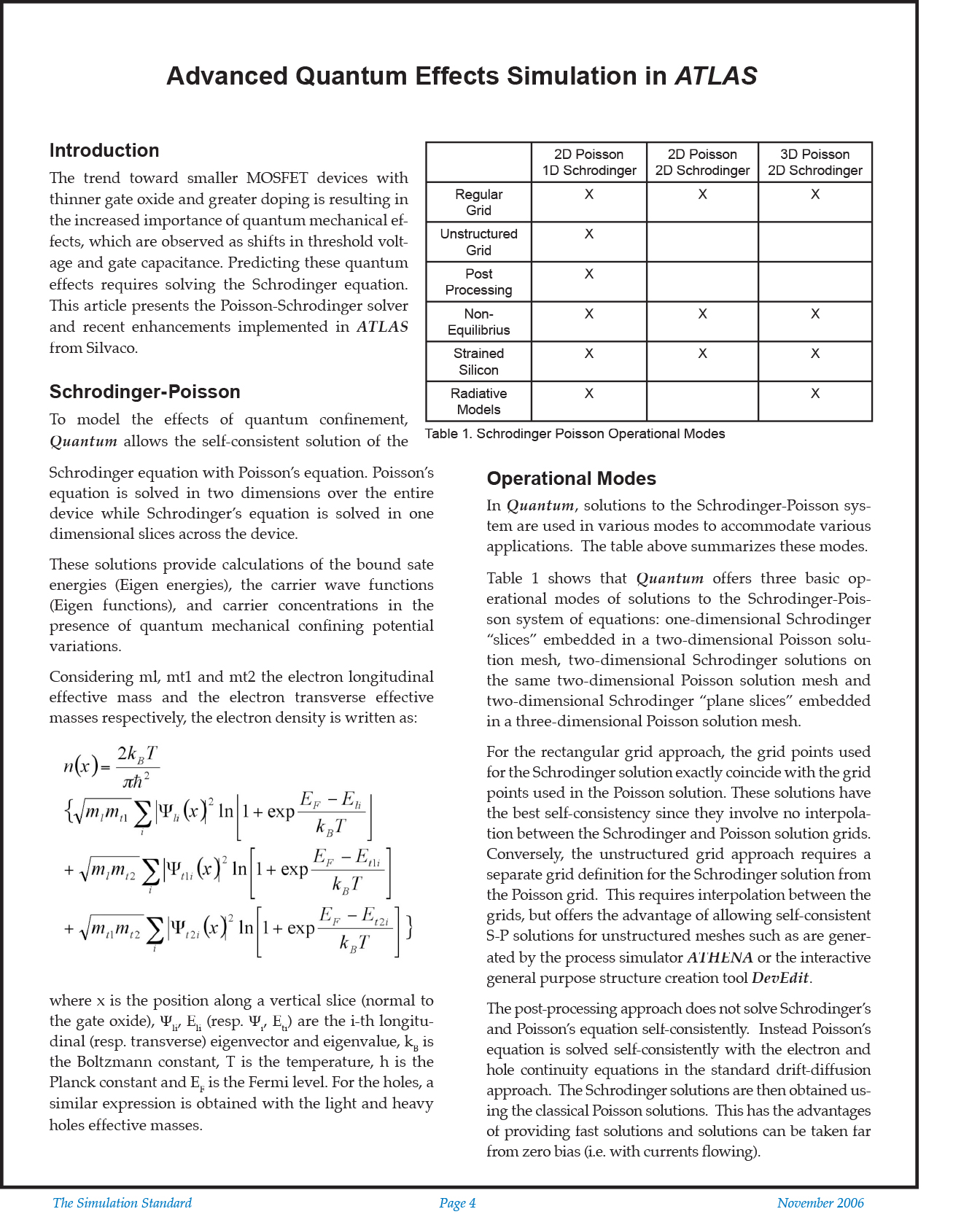Advanced Quantum Effects Simulation in ATLAS
Introduction
The trend toward smaller MOSFET devices with thinner gate oxide and greater doping is resulting in the increased importance of quantum mechanical effects, which are observed as shifts in threshold voltage and gate capacitance. Predicting these quantum effects requires solving the Schrodinger equation. This article presents the Poisson-Schrodinger solver and recent enhancements implemented in ATLAS from Silvaco.
Schrodinger-Poisson
To model the effects of quantum confinement, Quantum allows the self-consistent solution of the Schrodinger equation with Poisson’s equation. Poisson’s equation is solved in two dimensions over the entire device while Schrodinger’s equation is solved in one dimensional slices across the device.
These solutions provide calculations of the bound sate energies (Eigen energies), the carrier wave functions (Eigen functions), and carrier concentrations in the presence of quantum mechanical confining potential variations.
Considering ml, mt1 and mt2 the electron longitudinal effective mass and the electron transverse effective masses respectively, the electron density is written as:



